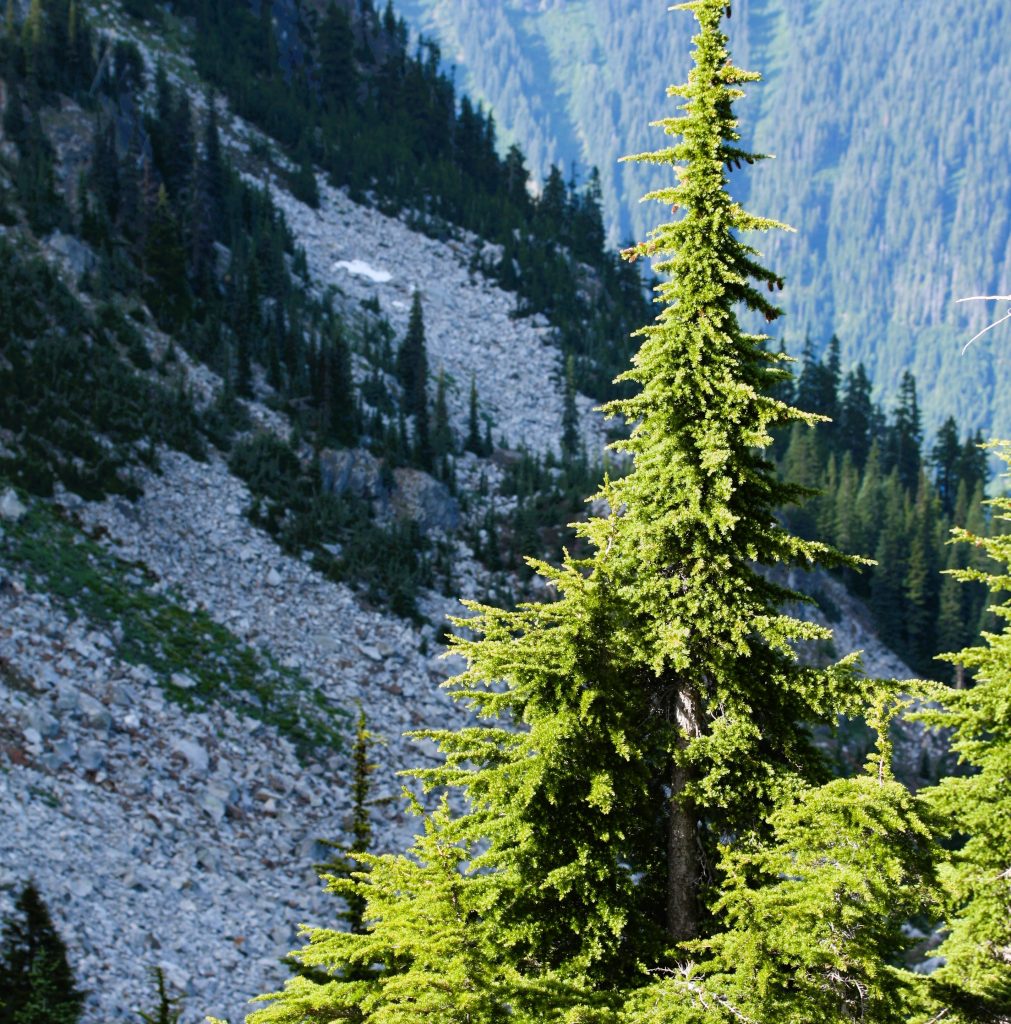Tsuga mertensiana: Jewel of the West Coast

Introduction
Mountain Hemlock, scientifically known as Tsuga mertensiana, stands tall as an impressive tree species native to the West Coast of North America. This article explores care, longevity, common pests, diseases, and more, providing a comprehensive view of this majestic conifer.
Foliage and cones of Tsuga mertensiana.
Description
Mountain Hemlock is an evergreen conifer of significant stature, reaching heights of 20–40 m, with exceptional cases of up to 59 m, and trunks that can reach 2 m in diameter. Its bark, in gray tones, fragments into squares. Its crown presents a slim conical shape in young trees, becoming cylindrical in older ones. At any age, it is distinguished by the slightly drooping tips of the twigs.
The needle-like leaves, 7–25 mm long and 1–1.5 mm wide, are soft and have a slightly flattened section. Its upper side exhibits a light bluish-green tone, while the underside shows two broad bands of bluish-white stomata. The shoots, orange-brown in color, have dense pubescence around 1 mm long. The cones are pendant, cylindrical, and longer than those of any other Tsuga species.
Care
Soil and Sun Exposure
- Thrives in well-drained soils.
- Prefers partial to full sunlight exposure.
Watering
- Requires regular watering, especially in dry periods.
Pruning
- Moderate pruning to maintain a natural form.
Longevity
Mountain Hemlock boasts an impressive longevity, thriving for several decades with proper care.
Common Pests and Diseases
Pests:
- Spider Mites: Regular inspection during growth seasons.
- Mites: Maintain a healthy environment to deter their presence.
Diseases:
- Root Rot: Avoid excessive watering to prevent rot.
- Defoliation: Monitor symptoms and apply appropriate treatments.
Distribution and Habitat
The distribution area of Tsuga mertensiana spans from the Kenai Peninsula, Alaska, to Northern Tulare County, California. It is mainly found at considerable altitudes, from sea level up to 3050 m in Sierra Nevada.
Frequently Asked Questions
Q1: How often should I water my Mountain Hemlock?
A: Mountain Hemlocks prefer regular watering, especially during dry periods. Ensure the soil is well-drained to prevent waterlogging.
Q2: What are the common pests affecting Mountain Hemlocks?
A: Spider mites and general mite infestations are common. Regular inspections and maintaining a healthy environment can help prevent these issues.
Q3: Can Mountain Hemlocks withstand full sunlight?
A: While they can tolerate full sunlight, Mountain Hemlocks generally thrive in partial to full sunlight exposure.
Conclusion
In conclusion, Mountain Hemlock stands out as a distinctive tree species on the West Coast. With proper care, this conifer can become a majestic and enduring presence in the landscape. Vigilance against potential pests and diseases ensures the ongoing health and longevity of this iconic tree species.

Leave a Reply
You must be logged in to post a comment.